27
junioSee What Door Lock Repair Tricks The Celebs Are Making Use Of
Comprehensive Guide to Door Lock Repair: Techniques, Tips, and Troubleshooting
Keeping the stability of door locks is necessary for home security and safety. Gradually, locks might come across concerns that can impede their functionality. Whether a key gets stuck, the lock ends up being stiff, or a more complicated breakdown occurs, understanding door lock repair - https://Landpointgroup.com/ - can save property owners time, money, and tension. This article will check out various types of door locks, typical problems, repair strategies, and ideas for maintaining lock health, all while answering frequently asked concerns.
Types of Door Locks
Before diving into repair techniques, it's vital to recognize the typical kinds of door locks. Comprehending the specific mechanism is essential for effective repairs.
| Type | Description |
|---|---|
| Deadbolt | A lock that can not be transferred to the employment opportunity except by rotating the lock cylinder. |
| Knob Lock | A type of lock that is mounted in the door knob itself. Typically used for residential security. |
| Lever Handle Lock | A lock mechanism triggered by a lever instead of a knob, using ease of use. |
| Smart Lock | A lock that includes electronics along with traditional locking systems, allowing control through mobile phone or biometric systems. |
Common Problems with Door Locks
Despite the type of door lock, numerous typical problems often emerge. Here is a list of the most common issues property owners encounter:
- Key Sticking or Getting Stuck
- Lock Not Turning Smoothly
- Lock Cylinder Misalignment
- Lock Making Unusual Noises
- Deadbolt Not Engaging Properly
- Lock Body Loose from Door
Detecting the Problem
Before trying repairs, it is important to properly diagnose the problem with the lock. Here are some useful actions to take:
- Inspect the Key: Look for wear or damage, as this may suggest a need for a replacement.
- Examine the Lock Cylinder: Check to see if it is securely fastened to the door.
- Evaluate the Alignment: Ensure the lock bolt lines up well with the strike plate when locked.
- Check for Obstructions: Look for debris, dirt, or rust inside the lock.
Step-by-Step Guide to Door Lock Repair
1. Secret Sticking or Getting Stuck
Potential Causes: Worn-out key, unclean lock cylinder, rust.
Repair Steps:
- Clean the Lock: Use a silicone-based lubricant sparingly to prevent drawing in dirt.
- Replace Key: If the essential looks damaged, consider having a new secret made.
- Look for Rust: If rust is present, apply rust cleaner and lube the mechanism.
2. Lock Not Turning Smoothly
Potential Causes: Lack of lubrication, misalignment, or internal mechanism failure.
Repair Steps:
- Lubricate the Lock: Use graphite or silicone spray.
- Inspect Alignment: Adjust screws that hold the lock mechanism in location.
- Take apart and Clean: If essential, carefully take apart the lock and clean the internal parts.
3. Deadbolt Not Engaging Properly
Possible Causes: Misalignment, damaged parts, or a faulty latch.
Repair Steps:
- Realign the Deadbolt: Make minor adjustments to the striker plate.
- Tighten up Hardware: Inspect and tighten screws on both the lock and the plate.
- Think about Replacement: If the deadbolt continues to malfunction, replacement may be necessary.
4. Lock Making Unusual Noises
Prospective Causes: Lack of lubrication or worn parts.
Repair Steps:
- Lubricate: Spray silicone lubricant in the keyhole and moving parts.
- Inspect for Wear: Check internal systems for indications of wear and change as needed.
5. Lock Body Loose from Door
Possible Causes: Loose screws or worn-out real estate.
Repair Steps:
- Tighten Screws: Ensure all screws that hold the lock to the door are tight.
- Enhance Housing: If the housing is harmed, it may require to be replaced totally.
6. Lock Cylinder Misalignment
Prospective Causes: Installation mistake or wear gradually.
Repair Steps:
- Adjust Lock Position: Loosen screws, reposition the lock cylinder, and retighten.
- Inspect Door Alignment: Ensure the door itself is lined up effectively in the frame.
Maintenance Tips for Longevity
To extend the life of door locks, regular maintenance is necessary. Here are some suggestions:
- Lubricate Regularly: Every 6 months, use a suitable lubricant to the keyhole and moving parts.
- Tidy Locks: Remove dust and grime actively to prevent wear.
- Examine Key and Lock: Periodically check that secrets are not harmed and locks are working efficiently.
- Prevent Forcing Keys: Do not use extreme force to unlock; this can cause cylinder damage.
- Change Worn-Out Parts: If any components reveal considerable wear, prompt replacement can prevent bigger concerns.
FAQs about Door Lock Repair
Q1: How can I inform if my door lock needs to be replaced rather than repaired?A1: If the lock is regularly malfunctioning in spite of repair work or is showing considerable wear and tear, such as a loose cylinder or broken bolt, replacement might be more cost-effective. Q2: What's the best lubricant to utilize for door locks?A2: Graphite powder or silicone spray is typically suggested as these do not draw in dust. Q3: Can I repair a smart lock myself?A3: Basic troubleshooting such as changing batteries or resetting
devices can typically be done by the property owner
, but complicated issues might need professional help. Q4: How frequently must I preserve my door locks?A4: It's recommended to examine locks biannually, specifically in high-traffic areas.
Q5: Is it worth working with a locksmith professional for minor lock repairs?A5: While many minor repair work can be taken on individually, utilizing a locksmith guarantees
expert evaluation and security proficiency. Comprehending door lock
repair is an important property for homeowners. Whether dealing with small issues or performing routine maintenance, being notified can secure your home's security while conserving money. By exploring kinds of locks, common issues, effective repair techniques, and maintenance ideas, one can guarantee that their door locks stay practical and reputable for years to come.


Reseñas